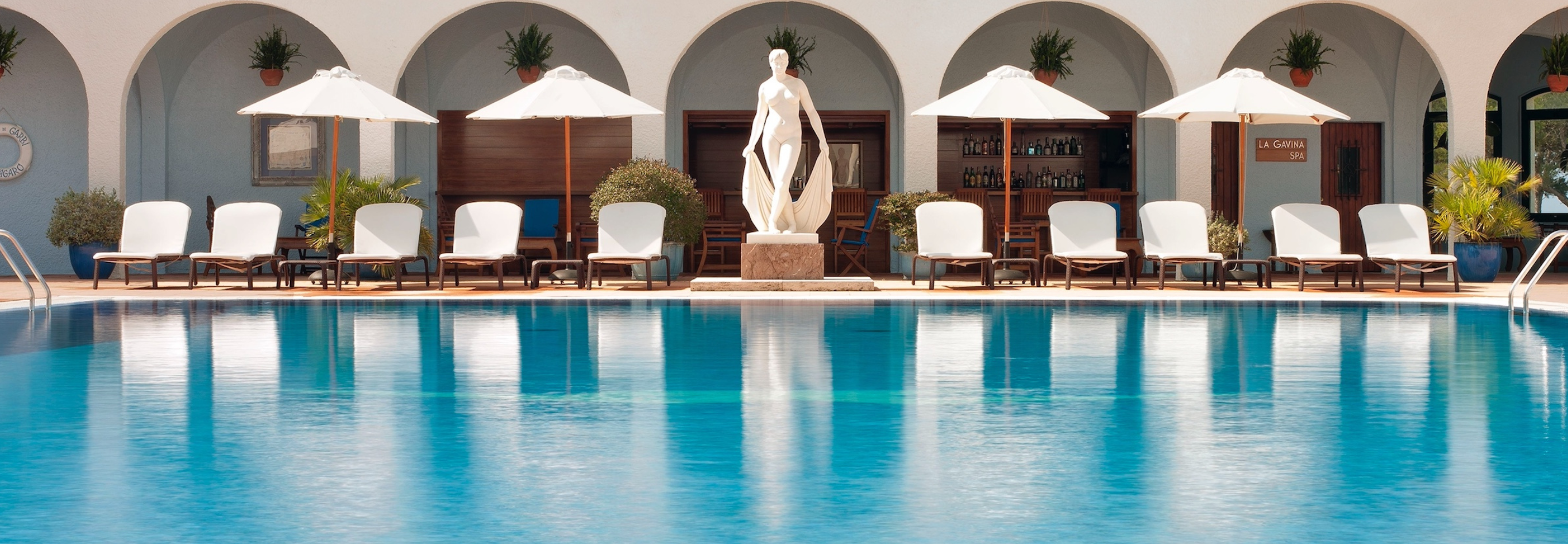
Josep Ensesa Gubert, his work: S’Agaró and the Hostal de la Gavina
S’Agaró was the dream of Josep Ensesa i Gubert (Sarrià de Ter, 1892-S’Agaró, 1981), which he made a reality and which his descendants have continued, with the same spirit, of preserving stylistic homogeneity and harmony between the architecture and landscape, and the protection of the natural environment of S’Agaró.
Thanks to the vision of Josep Ensesa, S’Agaró became an emblematic example of a garden city on the Costa Brava, and he had the renowned architect Rafael Masó i Valentí to carry out the urbanization project.
At the beginning of the 1920s, Josep Ensesa i Gubert, son of a successful industrialist from Girona, Josep Ensesa Pujades, persuaded his father to buy the land that was located between the bay of Sant Pol and the long beach of Sa Conca, north of Sant Feliu de Guíxols. The main jewel of the project was the Hostal de La Gavina.
Currently, the fourth generation of the Ensesa family -Julia, Virginia, Carina and Josep Ensesa Viñas- is in charge, with the same enthusiasm and commitment as their ancestors, to ensure that the hotel remains a unique and wonderful place.
PANEL 05

05.1 S’Agaró, the dream of Josep Ensesa Gubert
Josep Ensesa y Gubert (1882-1981) was a person of vast culture who, from a very young age, had resided abroad for long periods. A pogliglot, devoted to the arts, with a special sensitivity to differentiate quality from vulgarity, with a very strong personality and leadership skills and with an inexhaustible capacity for work, he combined these virtues with balance, sanity and prudence.
His work, S’Agaró, is the result of this push, voluptuousness and sensitivity, always within a balance and prudent order. His vision made the creation of S’Agaró possible and his successors have been able to maintain the spirit.
05.2 Hostal de La Gavina, the jewel of S’Agaró
When Josep Ensesa Gubert persuaded his father, Josep Ensesa Pujades, to buy the land that was located between the bay of Sant Pol and the long beach of Sa Conca, in the north of Sant Feliu de Guíxols, the area did not even have a name. The promoters of the first project decided to name it after the stream that ran there. The jewel of the project was the Hostal de la Gavina.
In 1953, Francesc Folguera completely redesigned the building conceived by Masó, since Ensesa understood that it would be insufficient to serve international tourism. In 1954, the renovated Gavina obtained the category of five-star luxury hotel, which made it an unprecedented case in the Catalan hotel system.
In 2011, The Leading Hotels of the World selected it as the only hotel in the group in Spain that continued in the hands of the founding family, without having sold it to external companies. Today the establishment has fifty-three rooms, twenty-one exclusive suites, a spa designed by Norman Cinnamond in 2004 (with views of the bay of Sant Pol) and two thousand square meters of gardens, renovated in 2022.


05.3 La Gavina Hostel, identity symbol of S’Agaró
The Hostal de La Gavina opened its doors, for the first time and with 11 rooms, on January 2, 1932. It was part of the community of chalets, touching on the sea, that Josep Ensesa Gubert was building with the designs of the architect Rafael Masó i Valenti.
Hostal de La Gavina has grown respecting the spirit of the original construction. Those first 11 rooms have become 74, and the hotel has added a spa, an outdoor pool, restaurants and a meeting space to its facilities, always maintaining its original style and without losing contact with its historical heritage.
The great parties and the most relevant events have never been lacking. The most emblematic example of recent years has been the celebration of the hotel’s 90th anniversary (2022), which brought together a very relevant and representative part of all areas of Catalan society to its gardens who, with their presence, wanted to support the anniversary.
